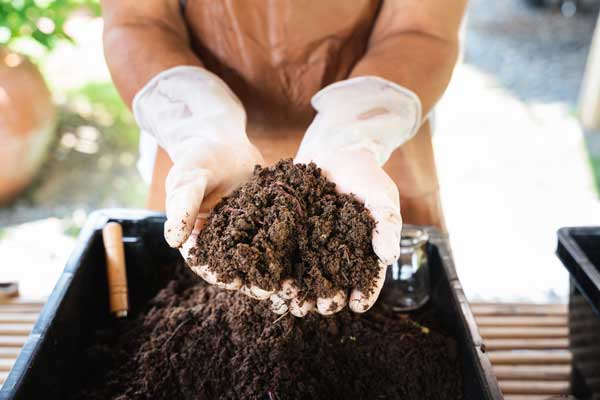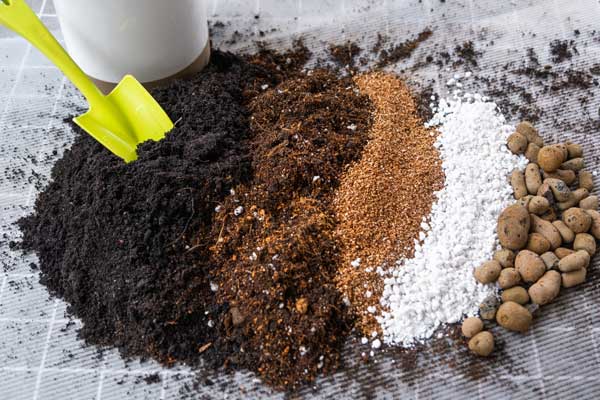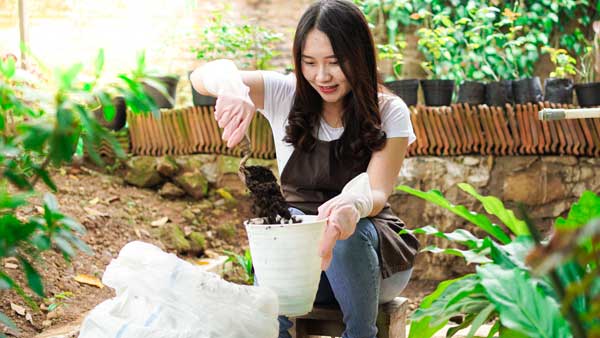Blood meal might seem like a fertilizer superhero, boasting organic cred and a powerful nitrogen boost. Made from dried blood, it’s a longstanding favorite for gardeners, promising vibrant plants and enriched soil. However, before you grab a bag, consider the not-so-rosy aspects of this fertilizer. Let’s explore the potential Disadvantages of Blood Meal, alongside the benefits, to help you decide if blood meal is the perfect fit for your garden paradise.
Blood Meal: Why It’s Popular
Imagine a fertilizer packed with protein and nitrogen – that’s blood meal in a nutshell! Derived from dried, sterilized animal blood, this finely ground powder offers a potent organic boost to your garden.
- Nitrogen Powerhouse:Blood meal shines with its high nitrogen content, a vital nutrient for strong plant growth and vibrant foliage.
- Versatility is Key:Whether you’re amending deficient soil, enriching compost, or directly feeding your plants, blood meal offers various application methods.
- Organic Champion:For eco-conscious gardeners, blood meal stands as a natural alternative to synthetic fertilizers, promoting sustainable practices.
Disadvantages of Blood Meal
Blood meal may be praised for its nitrogen content, but it’s not a one-size-fits-all solution for your garden. Here’s a breakdown of the downsides to consider before incorporating it into your fertilizing routine:
-
Unwelcome Visitors: The pungent aroma of blood meal can attract unwanted guests like rodents, raccoons, and even larger predators. This can not only damage your plants but also become a nuisance.
-
Environmental Impact: While organic, blood meal’s high nitrogen content can disrupt the delicate balance in your soil. Excess nitrogen can leach into waterways, harming aquatic life. Long-term overuse can also lead to nutrient deficiencies in the soil.
-
Nutrient Imbalance: Blood meal excels in nitrogen, but other essential building blocks for plants might be lacking. This throws off the soil’s nutrient balance and may not be suitable for all plants’ specific needs.
-
Overfertilization Risk: Blood meal’s high nitrogen can easily lead to over-fertilization. This disrupts the nutrient balance, hindering flowering and fruiting. In severe cases, “nitrogen burn” can damage roots and leaves.
-
Soil Acidity: Blood meal lowers soil pH, making it more acidic. While some plants thrive in acidic soil, others prefer neutral or alkaline conditions. This acidity can stunt the growth of plants sensitive to a sour environment.
-
Unpleasant Odor: The strong smell attracts scavengers and curious pets. This can disrupt your garden’s tranquility and potentially lead to animal disturbances or damage caused by their foraging.
-
Storage Challenges: Blood meal requires proper storage to maintain effectiveness and avoid spoilage or clumping. Moisture and air degrade its quality and reduce its fertilizing power. Store it in airtight containers in a cool, dry place to preserve its integrity.
Blood meal offers a natural boost to your garden, but it’s crucial to handle it safely. Here’s why and how:
Why Safety Matters:
Blood meal comes from animals, and like any animal product, it can harbor germs. Improper handling could lead to unwanted health issues.
Safe Handling Practices:
- Suit Up:Don gloves, goggles, and a mask when working with blood meal. This prevents skin contact, accidental inhalation, and irritation.
- Wash Up:Wash your hands thoroughly with soap and water after handling blood meal. This removes any lingering particles and minimizes contamination risks.
- Breathe Easy:Apply blood meal outdoors in a well-ventilated area. This reduces the chance of inhaling dust or airborne germs.
- Storage Smarts:Keep blood meal in a sealed container in a cool, dry place. Store it away from children, pets, and food to prevent accidental contact or ingestion.
Protecting Pets and Wildlife:
Blood meal’s enticing scent can attract curious creatures. Here’s how to keep them safe:
- Fortress Garden:Build fences or barriers around your garden beds to limit access and prevent unwanted critters from digging up or eating the blood meal.
- Natural Deterrents:Use pet-safe repellents or strategically placed scents to discourage animals from entering areas where blood meal is applied.
- Pet Patrol:Supervise your furry friends while they’re outdoors to prevent them from encountering blood meal.
- Leftovers Be Gone:Dispose of any unused blood meal or application residues responsibly to avoid attracting animals.
- Be Vigilant:Look for signs of illness or unusual behavior in pets or wildlife that might indicate ingestion of blood meal. If needed, seek veterinary assistance promptly.
By following these safety tips, you can enjoy the benefits of blood meal while protecting yourself, your pets, and the surrounding wildlife. Remember, responsible gardening goes hand-in-hand with safe practices!
Beyond Blood Meal: Exploring Fertilizer Options
Blood meal offers a powerful punch, but it’s not the only player in the organic fertilizer game. Let’s delve into some alternatives that can nourish your plants and keep your garden thriving:
- Nature’s Bounty:
- Bone Meal:This ground-up bone powerhouse provides essential phosphorus and calcium for strong roots, vibrant blooms, and overall plant health.
- Fish Emulsion:Made from fermented fish, this option delivers a balanced NPK (nitrogen, phosphorus, potassium) boost, promoting healthy foliage, flowering, and fruiting.
- Compost:The king of all-rounders! Decomposed organic matter in compost provides a wealth of nutrients, improves soil structure, and fuels beneficial microbes for happy plants.
- Manure:Aged manure from cows or horses adds a potent dose of nitrogen, phosphorus, potassium, and organic matter to your soil, enriching your plants.
- Targeted Solutions: While organic options are fantastic, synthetic fertilizers offer specific solutions for particular needs. They provide precise nutrient ratios and faster results, making them handy for tackling deficiencies or promoting rapid growth. Here are some to consider: * Nitrogen Boosters: Ammonium nitrate or urea provide readily available nitrogen to fuel green growth and lush foliage. * Root Powerhouses: Triple superphosphate or diammonium phosphate focus on phosphorus, ideal for promoting root development, flowering, and fruiting. * Stress Fighters: Potassium chloride or potassium sulfate help plants handle stress, improve fruit quality, and enhance overall vigor.
Remember: When choosing fertilizers, consider your plants’ needs, soil conditions, and environmental impact. With such a diverse range of options available, you can tailor your fertilizer choices to create a thriving and sustainable garden paradise!
Blood Meal: A Double-Edged Sword for Your Garden
Blood meal might seem like a natural wonder fertilizer, but it’s not all sunshine and roses. While its high nitrogen content and organic nature are enticing, there are some downsides to consider:
- Nutrient Imbalance:Blood meal’s amino acid profile leans heavily towards nitrogen. This can throw off the delicate balance in your soil, potentially neglecting other nutrients crucial for plant health.
- Over-Fertilization Woes:Go easy on the blood meal! Excess nitrogen can lead to over-fertilization, hindering flowering and fruiting. Worse yet, it can cause “nitrogen burn” on your plants’ roots and leaves.
- Soil Turning Sour:Blood meal can lower your soil’s pH, making it more acidic. While some plants love acidic soil, others prefer a neutral or even alkaline environment. This acidity can stunt the growth of plants that dislike a sour environment.
- Unpleasant Aroma:Blood meal has a strong odor that can attract unwanted guests, like scavengers or curious pets. This might disrupt your garden’s peace and quiet and potentially lead to animal disturbances or damage caused by their foraging.
- Storage Shenanigans:Blood meal needs proper storage to stay effective and avoid spoilage or clumping. Moisture and air are its enemies – they degrade its quality and reduce its fertilizing power. Store it in airtight containers in a cool, dry place to preserve its potency and prevent it from turning clumpy.
The Takeaway: Informed Use is Key
Blood meal can be a valuable tool in your gardening arsenal, but informed use is crucial. By understanding its limitations and implementing appropriate practices, you can harness its benefits while minimizing its downsides for a thriving garden.
Choosing the Right Fertilizer: A Balancing Act
When selecting fertilizers for your garden or farm, it’s vital to weigh the pros and cons of each option. Blood meal offers advantages but requires careful consideration of nutrient balance, risks of over-fertilization, soil compatibility, odor, and storage needs.
Exploring alternative fertilizers and implementing sustainable practices can help mitigate the drawbacks associated with blood meal. Ultimately, a holistic approach to fertilizer selection is key for cultivating healthy plants and a sustainable agricultural system. By prioritizing informed decision-making, you can optimize your fertilizer choices to achieve optimal results while minimizing negative impacts on the environment and plant health.
Blood Meal: Mastering the Boost (Bonus Section)
Blood meal packs a punch, but unlocking its full potential requires some finesse. Here’s how to maximize the benefits and overcome its limitations:
- Nutrient Teamwork:Blood meal’s strength lies in nitrogen, but other nutrients might be lacking. Team it up with complementary fertilizers! Bone meal, fish emulsion, or compost can create a balanced blend tailored to your plants’ specific needs.
- Application Precision:Don’t go overboard! Over-fertilization is a risk. Carefully follow recommended application rates and start small. Gradually increase as needed to ensure your plants receive adequate nutrition without imbalances or burn.
- Know Your Soil:Before diving in, conduct soil tests to assess pH and nutrient deficiencies. If blood meal might make your soil too acidic, incorporate lime or other alkaline amendments. Striking a balance in soil acidity is key for happy plants!
- Odor Outsmarting:The strong odor can be a nuisance. Apply blood meal in well-ventilated areas or incorporate it directly into the soil to minimize surface exposure. A layer of mulch can further mask the smell and deter curious critters.
- Storage Savvy:Keep your blood meal fresh and effective! Store it in airtight containers in a cool, dry place away from sunlight and moisture. Regularly check for spoilage or clumping, and discard any compromised batches.
Turning Blood Meal into a Garden Hero
By implementing these strategies, you can transform blood meal into a valuable asset. Experiment and find the approach that works best for your garden. Combining techniques like nutrient blending, controlled application, and proper storage can help you unlock the full potential of blood meal while minimizing its drawbacks. With informed use and a little planning, blood meal can become a powerful tool in your gardening arsenal!
Blood Meal in Your Garden: Your Questions Answered!
Blood meal can be a powerful tool for flourishing plants, but it comes with its own set of quirks. Let’s answer some of the most common questions gardeners have about this natural fertilizer:
What is Blood Meal and How is it Made?
Blood meal is an organic fertilizer made from dried, sterilized blood, usually sourced from slaughterhouses. The blood is ground into a fine powder, creating a nitrogen-rich boost for your garden.
Why Use Blood Meal?
Gardeners love blood meal for its high nitrogen content. This translates to healthy plant growth, lush foliage, and improved soil fertility. Plus, it’s a natural and sustainable alternative to synthetic fertilizers.
What are the disadvantages of blood meal?
Blood meal isn’t perfect. Here are some things to keep in mind:
- Uneven Nutrients: While high in nitrogen, other nutrients might be lacking.
- Over-fertilization: Too much can lead to nutrient burn in plants.
- Soil Acidity: Blood meal can make your soil more acidic, which some plants dislike.
- Strong Odor: The smell can attract unwanted visitors.
- Storage Challenges: Proper storage is key to prevent spoilage.
How to Apply Blood Meal?
There are two main ways to use blood meal:
- Mix it into the soil before planting.
- Apply it as a top dressing around established plants.
Always follow recommended application rates and water thoroughly after use to activate the nutrients.
Blood Meal Alternatives?
Absolutely! Here are some options:
- Bone meal (phosphorus rich)
- Fish emulsion (balanced NPK)
- Compost (nutrient-rich and improves soil structure)
- Manure (adds nitrogen, phosphorus, potassium, and organic matter)
- Synthetic fertilizers (targeted solutions for specific needs)
Is Blood Meal Safe for Pets and Wildlife?
While generally safe for plants, the strong odor can attract animals. Take precautions to prevent them from ingesting or contacting blood meal, which could cause health issues.
Blood Meal for Organic Gardening?
Yes! Blood meal’s natural origin and high nitrogen content make it a popular choice for organic gardens. However, always check with organic certification standards for specific regulations.
Storing Blood Meal?
Keep it fresh and effective! Store blood meal in airtight containers in a cool, dry place away from sunlight and moisture. This prevents spoilage, clumping, and degradation.
Blood Meal for All Plants?
Not quite. While many benefit, the high nitrogen and potential impact on soil pH may not be suitable for all species. Consider individual plant needs before using blood meal.
Health Risks from Blood Meal?
Improper handling can pose health risks due to potential pathogens. Wear protective gear like gloves and a mask when handling blood meal to minimize contamination risk.
The Takeaway:
Blood meal can be a valuable tool in your gardening arsenal, but informed use is key. By understanding its benefits and limitations, you can harness its power for a thriving garden while minimizing drawbacks. Experiment and find the approach that works best for you and your plants!
Useful Links
Blood Meal Click Here
For further exploration of gardening articles, kindly visit our webpage: Home Garden
17 Fastest Growing Cactus Species for Your Thriving Garden
Poa Annua vs Crabgrass Invaders in Your Lawn (Identification & Control Guide)
Red Creeping Thyme Texas Tough & Fragrant Groundcover (Fast-Growing!)
7 Plants That Look Like Foxglove – Toxic + Safe Look Alike
Zinnia Companion Plants: Attract Pollinators For a Thriving Garden



